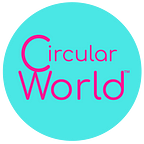The Circular Economy — It is All In Our Head
Everyone is complaining that our ability to address the challenges of our times is not happening fast enough. We know the problems, we have the solutions, the clock is ticking, the world is getting hotter, biodiversity is shrinking, resources are getting scarcer, and still we dawdle along. So, what’s up?
Consumers want brands and companies to be more environmentally and socially responsible. Brands, in return, want consumers to do their part. It is a confusing world out there with many conflicting messages, made worse by the ‘science’ of everything.
Consumers are faced with consumption choices every day. In making choices, decisions favour actions representing either circular or linear consumer behaviour. For example, if a consumer chooses to buy unpackaged vegetables, they save the material resources used in producing the packaging, and when consumers service their cars regularly, they maintain the value of the parts and materials in the car.
Consumer Choice and the Circular Economy
Despite the circular economy being a ‘good idea’, there are three key barriers called the Intention-Action Gap, which may inhibit the uptake of circular business models. These barriers are:
There are a few solutions to the intention-action gap; the one I like the most is:
- Keep it simple. Humans naturally gravitate to what is easy. If a new behaviour is even slightly more difficult, you’ll probably avoid it. So, think in baby steps.
- Make it automatic. Take the thinking out of your process. For example, adjusting your thermostat in your heating or air-conditioning unit to be one or two degrees warmer in the summer and colder in the winter saves energy without massive changes in temperature.
- Build it into your routine. Try “piggybacking” or integrating a new behaviour into an existing routine. Behavioural scientist Dr BJ Fogg recommends adding or stacking a new behaviour onto an existing one. For example, “stack” a behaviour like walking around your house, turning off lights next to brushing your teeth before going to bed, so that right after — during — your nighttime brush, you’re also making sure you’re not leaving the lights on overnight.
Looking for Something Deeper?
Psychologists and behavioural scientists around the world are taking a deeper dive into consumer behaviours, and there is a growing body of excellent research being published, such as the idea of behaviour chain mapping.
“Such behavioural insights — lessons derived from behavioural economics and psychology — are valuable for companies aiming to further develop their circular business models, or for companies who have just started. Think about behavioural insights as circular economy’s new best friend.”
Consumption systems represent a set of activities, decisions, and behaviours that comprise the acquisition and usage of products and services to meet customers’ needs. The set of consumers’ activities, decisions, and behaviours following the principles of the circular economy is called a circular consumption system.
When designing circular consumption systems and the consumer journeys undertaken by consumers within them, it is important to account for every behaviour in a chain and ensure that they are accurate and complete. This includes consideration of consumer psychology and system factors important for the performance of behaviour, with a view to facilitating the whole consumer journey and supporting the consumer to ultimately transform their journey into a routine.
Conclusion
Yes, consumer behaviours sound and look complicated. Most SMEs involved in circular business models may feel overwhelmed by the level of detail in encouraging more uptake in their offerings. The recommendation is to read the research and simplify the mapping to make it applicable to your business. There is an impressive amount of new behavioural research being published, especially on reuse and repair that go beyond the anti-plastics movement and product design.
***************************
Ms Adrienna Zsakay is the Founder and CEO of Circular Economy Asia Inc, and this article represents her opinions on the circular economy. Circular Economy Pick of the Week is brought to you by Circular World™ Media — a brand owned by Circular Economy Asia Inc.
References
‘Enabling consumer choices for a circular economy’ published by the European Environment Agency, last updated 07 February 2023
‘Closing the Sustainability Intention-Action Gap’ by Tom Gould, published by Impactmr.com, 24 September 2020.
‘Taking Action This Earth Month’ by Kenda Carlson, published by Akamai, 13 April 2021
‘Why behavioural insights is the new best friend of circular economy’ by Evelina Gunnarsson, Peter Önnby, Frida Lindqvist, published by Ramboll, 20 October 2022.
‘Role of consumer mindsets, behaviour, and influencing factors in circular consumption systems: A systematic review’ by Giovana M. Gomes, Natalia Moreira, Aldo R. Ometto, published in Sustainable Production and Consumption, July 2022.
‘Psychological and systemic factors influencing behaviour in circular consumption systems. Lessons from the fast-moving consumer goods and apparel industries’ by Żaneta Muranko, Giovana Monteiro Gomes, Marco Aurisicchio, Aldo Ometto, published in Research Gate, June 2023
Originally published at https://www.linkedin.com.
